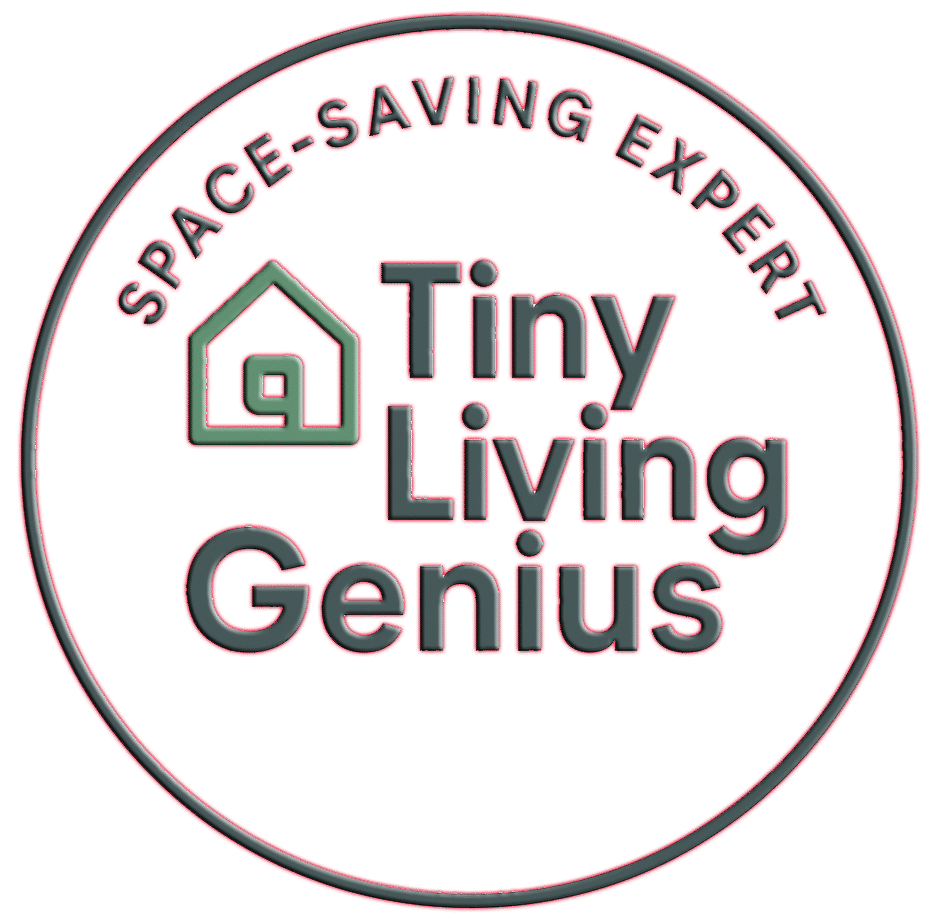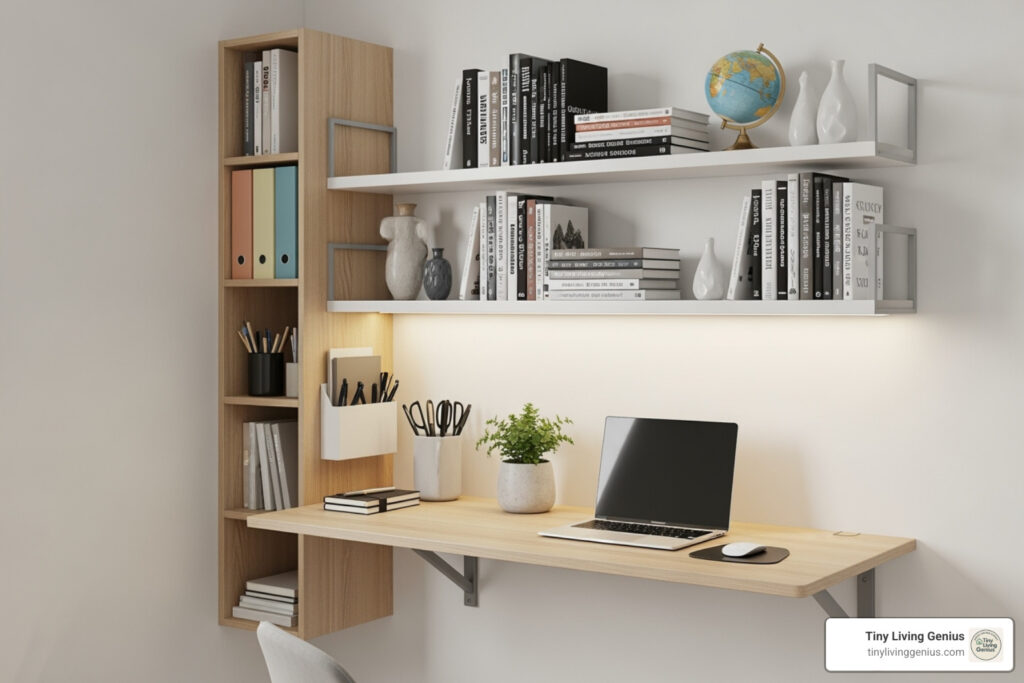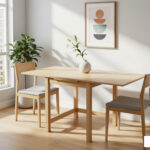Wall desk organization: 10 Genius Ideas!
Why Wall Desk Organization is a Game-Changer for Small Spaces
Wall desk organization transforms cramped workspaces into efficient, stress-free zones that actually make you want to sit down and get things done. Here are the key benefits and solutions:
Quick Organization Ideas:
- Pegboard systems – Customizable hooks and shelves for tools and supplies
- Floating shelves – Minimalist storage for books and decorative items
- Modular wall grids – Flexible bins and file holders that adapt to your needs
- DIY clipboard walls – Simple paper management for projects and tasks
- Door organizers – Maximize space when wall area is limited
Are you drowning in paper clutter while trying to work from your tiny apartment? Research shows that employees in workspaces designed around their specific needs aren’t just happier – they’re also more productive. The problem is that traditional desk organization eats up precious surface space you simply don’t have.
Wall desk organization flips the script by moving your storage vertical. Instead of stacking papers and supplies on your already-cramped desk, you create designated spaces on the wall above and around your workspace. This approach keeps your main work surface clear while putting everything within easy reach.
The beauty of wall organization lies in its flexibility. Whether you need a simple clipboard system for managing paperwork or a full modular setup with shelves, bins, and cable management, there’s a solution that fits your space, budget, and style.
I’m Ramy Saber, a civil engineer and digital entrepreneur who has spent years optimizing small-space functionality through smart design solutions. My experience in project management and facility operations has taught me that effective wall desk organization is often the difference between a chaotic workspace and one that actually supports your productivity.
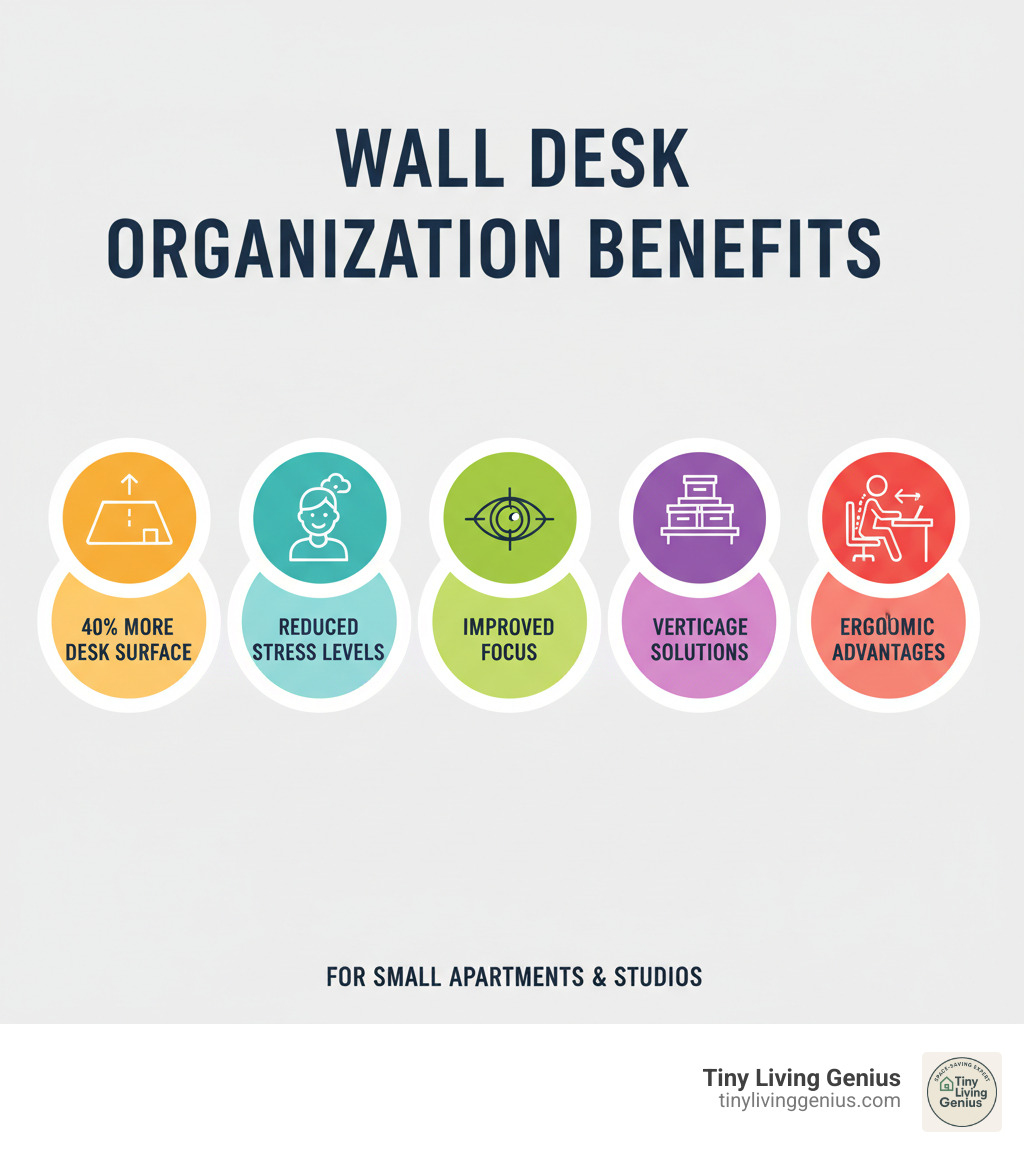
Why Go Vertical? The Benefits of Wall Desk Organization
Picture this: you sit down at your desk, ready to tackle your day, but instead of feeling energized, you’re immediately overwhelmed by the chaos staring back at you. Sound familiar? This is where wall desk organization becomes your secret weapon for changing not just your workspace, but your entire work experience.
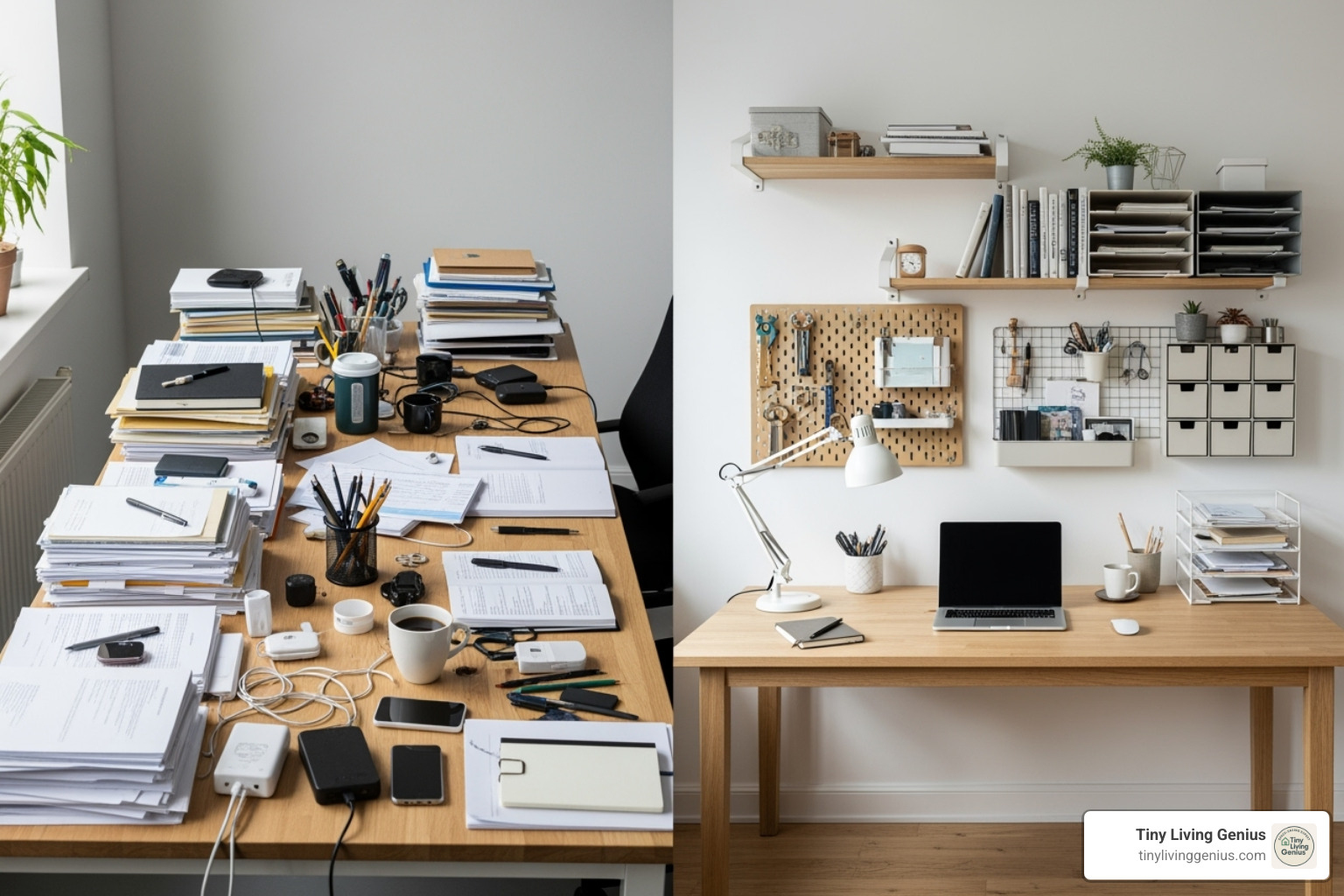
Space Efficiency: Your Desk Gets a Makeover
The most obvious win? You suddenly have a desk surface again! By moving your pens, notebooks, files, and even monitors up onto the wall, your actual desk transforms from a storage dumping ground into a clean workspace where you can actually work.
This is especially game-changing if you’re living in a tiny apartment where every square inch matters. Instead of playing Tetris with your supplies on a cramped desk, you’re using that forgotten wall space above your workspace. It’s like finding a whole new room you didn’t know you had.
Mental Clarity and Reduced Stress
Here’s something interesting: employees in workspaces designed around their specific needs aren’t just happier, they’re also more productive. Your brain craves order, and when your workspace is chaotic, your mind feels chaotic too.
Wall desk organization creates what I like to call “visual breathing room.” When everything has its designated spot on the wall, you’re not constantly scanning piles of papers or hunting for that pen that somehow migrated under a stack of notebooks. This reduction in mental friction translates directly into better focus and less stress.
Everything Has a Home
The beauty of wall organizers lies in their ability to give every single item a specific address. Your headphones live on that hook, current projects sit in that file holder, and your favorite coffee mug has its own little shelf.
This isn’t just about looking neat (though that’s a nice bonus). When putting things away is as easy as taking them out, you naturally develop better organizational habits. No more “I’ll just set this here for now” moments that turn into permanent clutter.
Health Benefits Through Better Ergonomics
Here’s an unexpected benefit: when your wall handles storage duty, your desk can finally focus on supporting you. With a clear surface, you have room for proper keyboard placement, optimal monitor positioning, and maybe even space to consider a standing desk setup.
As research shows, replacing traditional workstations with ergonomic solutions can offer fantastic health benefits. Wall desk organization indirectly supports these healthier working postures by freeing up the space you need for proper setup.
For those ready to take their workspace optimization even further, wall-mounted desks serve as smart solutions for space-saving workstations, combining the benefits of vertical organization with space-efficient furniture design.
The bottom line? Going vertical isn’t just about saving space—it’s about creating a workspace that actually works with you instead of against you.
Types of Wall Organizers for Every Style and Need
Finding the perfect wall desk organization system feels a bit like dating – you need to find the one that matches your personality, fits your space, and actually works with your daily routine. The good news? There are plenty of options out there, and unlike dating, you can actually try several at once!
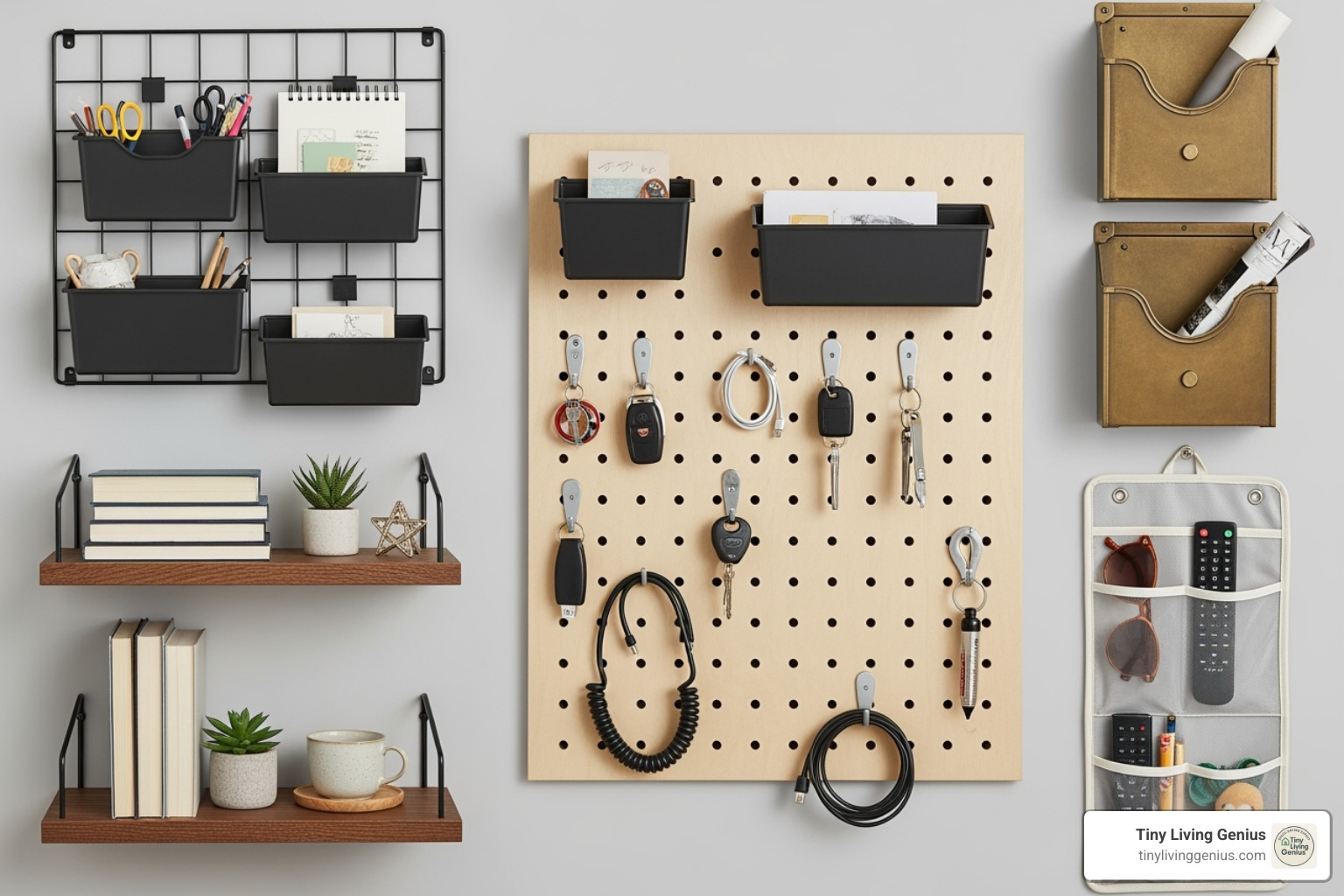
The beauty of wall organizers lies in their diversity. Pegboards offer the ultimate flexibility with their customizable hooks and shelves – perfect if you like to rearrange things regularly. Floating shelves bring that clean, minimalist vibe while giving you space for books and decorative touches. Modular wall grids are the heavy-duty champions that can handle everything from file folders to heavier equipment.
For paper management, mailbox-style sorters create neat compartments for all those documents that seem to multiply overnight. When wall space is tight, compact door organizers work magic by turning any door into storage real estate. And if you’re really pressed for space, you can maximize workspace with small fold-up desks with shelves that combine work surface and storage in one clever package.
Pegboard Systems
Pegboards are like the Swiss Army knife of wall desk organization – incredibly versatile and ready for whatever you throw at them. These perforated panels give you complete freedom to arrange hooks, baskets, and small shelves exactly where you need them.
What makes pegboards so appealing is their adaptability. Your workspace needs change? No problem. Simply move the hooks around, add a new basket, or swap out accessories. This flexibility makes them perfect for creative types, students, or anyone whose work tools evolve over time.
You’ll find tons of inspiration for office wall organization above desk setups using pegboards. They’re particularly great for keeping frequently used items like scissors, pens, and headphones within easy reach while maintaining that organized, intentional look.
Modular Wall Systems
If pegboards are the Swiss Army knife, then modular wall systems are the professional tool kit. These sophisticated systems offer incredible flexibility with a more polished, industrial aesthetic that works beautifully in modern spaces.
The real magic happens with their scalability. Start with a basic panel and a few accessories, then expand as your needs grow. Slatwall systems are particularly impressive because they can handle heavier items while maintaining clean lines. You can integrate specialized bins for larger supplies, dedicated file holders for important documents, and even custom shelves for unique equipment.
What’s really exciting about many modular systems is their environmental consciousness. Some are made with up to 31% recycled content and are completely recyclable themselves – a win for both your organization goals and the planet.
Floating Shelves and Ledges
Sometimes the most neat solution is also the simplest. Floating shelves embody this philosophy perfectly, offering practical storage that seems to disappear into your wall design.
These minimalist marvels excel at creating designated homes for your most-used items while maintaining an airy, uncluttered feel. They’re perfect for displaying books you actually reference, small plants that brighten your workspace, or even task lighting that makes everything feel more inviting.
The beauty of floating shelves lies in their ability to turn functional storage into part of your room’s aesthetic. Instead of hiding everything away, you can create an organized display that reflects your personality while keeping essentials within arm’s reach.
10 Inspiring Ideas for Your Workspace
Ready to transform your tiny workspace into an organized haven? Let’s explore some creative and practical wall desk organization ideas that will make your small space work harder for you. These aren’t just pretty pictures – they’re real solutions that busy people use every day to stay sane and productive.
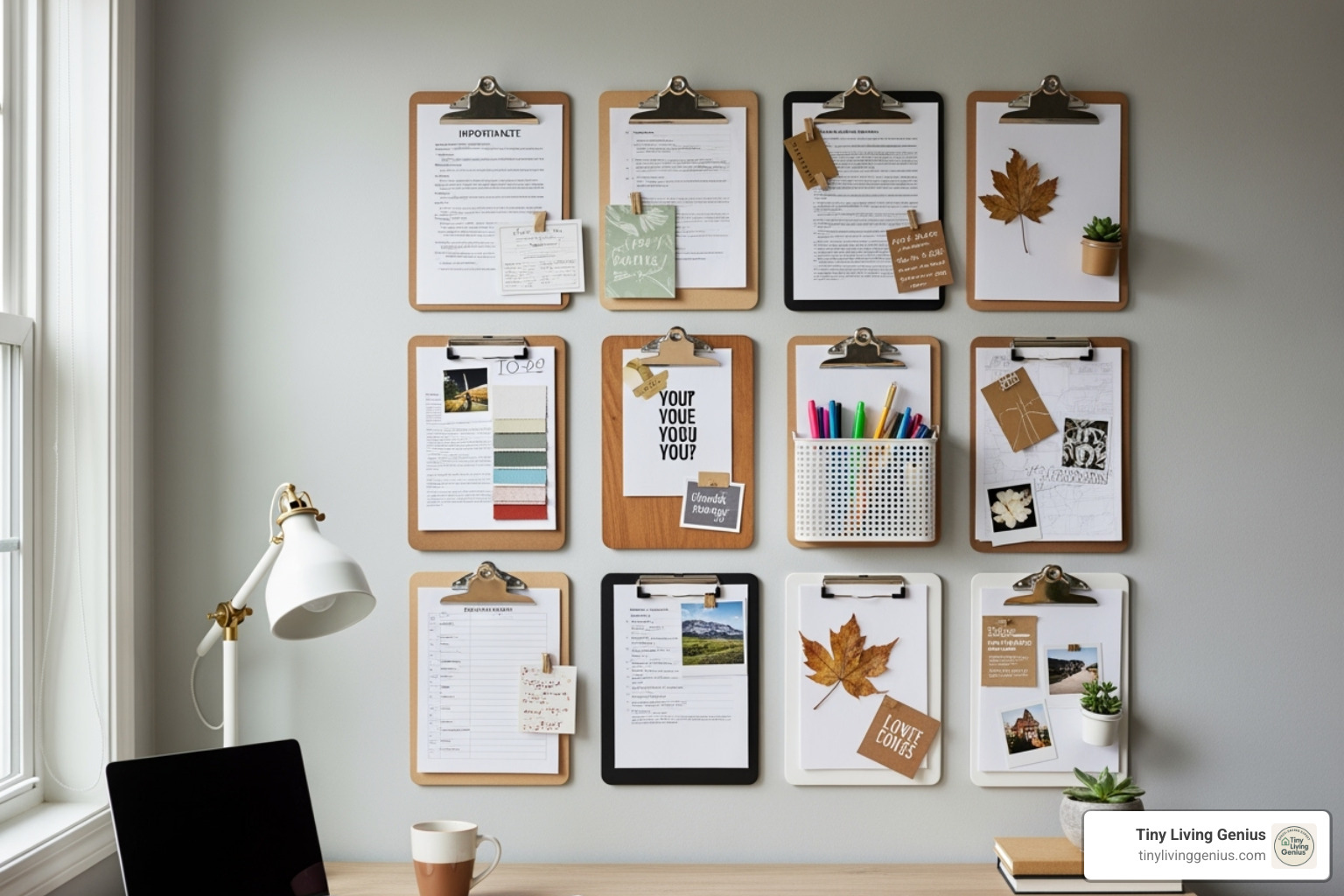
The DIY Clipboard Command Center
This might be the smartest organizational hack you’ll ever try. The clipboard wall system is absolutely brilliant for anyone drowning in paper chaos – whether it’s work documents, kids’ school papers, or that pile of “important stuff” you keep meaning to sort through.
What makes this solution so genius? You can see everything at once. No more digging through stacks or forgetting about that important form buried under last week’s mail.
Creating your own clipboard wall is surprisingly simple. You’ll need some attractive clipboards (look for ones with small retractable hangers), simple flat-headed nails, and a hammer. That’s it – no fancy tools or complicated installation.
Start by figuring out how many clipboards you actually need. Three might be perfect for a single person, while a busy family might need a dozen. Plan your layout on paper first, then find the center of your wall space and work outward. The key is grouping like items together – one clipboard for urgent tasks, another for reference materials, maybe one for creative projects.
The real magic happens when you start using it. Need to tackle your weekly planning? Grab that clipboard and take it to your desk. Finished with a project? File away the completed papers and start fresh. This visual system keeps everything moving instead of piling up.
The Minimalist Wall
Sometimes less really is more, especially in tiny spaces where every visual element matters. A minimalist approach to wall desk organization creates a calm, focused environment that actually helps your brain concentrate better.
Think clean floating shelves in neutral colors, maybe a simple chalkboard for quick notes, and sleek wall-mounted storage that practically disappears into your decor. The goal isn’t to eliminate storage – it’s to make it so seamlessly integrated that your wall feels spacious and serene.
This style works beautifully with desk-mounted wall ideas for tiny apartments, where every element serves a purpose without creating visual clutter. A small chalkboard painted directly on the wall can handle daily reminders while maintaining that clean aesthetic.
The beauty of minimalist organization is that it forces you to be intentional. Every item on your wall earns its place by being genuinely useful, not just taking up space.
The Tidy Command Center
This is where busy lives get organized. A proper command center becomes the nerve center of your home – the place where schedules, important papers, and daily logistics all come together in one manageable system.
Your command center should include a central calendar (dry-erase boards work great), cascading folders for different types of paperwork, memo boards for quick notes, and designated spots for mail sorting and key storage. The key is creating specific homes for different types of information so nothing gets lost in the shuffle.
A mailbox-style wall organizer can be particularly helpful here. These systems with labeled compartments like “In,” “Out,” and “To File” keep paper flowing through your system instead of creating permanent piles. The goal is to create an organized desktop by using wall-mounted solutions that keep surfaces clear.
The magic happens when everyone in your household knows exactly where things go. Bills go in one spot, school forms in another, and important reminders stay visible until they’re handled.
The Vintage-Inspired Nook
Who says organization can’t have personality? A vintage-inspired approach to wall desk organization brings warmth and character to your workspace while keeping everything beautifully organized.
Think rustic materials like reclaimed wood shelves, repurposed items that tell a story, classic chalkboards with weathered wooden frames, and sturdy wire baskets that look like they came from an old general store. You might incorporate an antique clock, vintage maps as backdrop, or wooden crates transformed into unique shelving.
This style pairs wonderfully with wall-to-wall desk ideas for small spaces, creating a workspace that feels more like a cozy retreat than a sterile office. The charm comes from mixing function with history – every organizational element adds to the story of your space.
The best part about vintage-inspired organization is that it often costs less than buying everything new. That old wooden ladder can become a unique shelving unit, and those mason jars your grandmother used can hold pens and supplies with style.
How to Choose the Right System for You
Finding the perfect wall desk organization system doesn’t have to be overwhelming. Think of it like finding the right pair of jeans – you need to know your size, your style, and what you’ll be doing while wearing them. The same approach works for organizing your workspace.
We’ve put together various space-saving wall-mounted desk reviews that showcase integrated organization features, which can help inform your decision-making process.
Assess Your Needs and Space
Before falling in love with that gorgeous pegboard on Pinterest, let’s get practical about what you actually need.
Start with an item inventory – and be honest about it. Grab everything currently cluttering your desk and sort it into piles. Pens and pencils, papers and notebooks, electronics and cables, books, decorative items, craft supplies. This reality check often reveals we have way more stuff than we thought (hello, collection of 47 pens that don’t work).
Next, consider your work style. Are you someone who needs everything visible and within arm’s reach? Or do you prefer a clean slate with items tucked away? Some of us are visual thinkers who benefit from seeing our projects spread out, while others find peace in minimalist spaces where everything has a hidden home.
Wall dimensions matter more than you might think. Measure the available space above and around your desk, noting the height, width, and any obstacles like windows, outlets, or light switches. When planning your wall organization, it’s crucial to consider your specific needs and the items you’ll be storing.
Think about accessibility too. Items you use daily should be positioned at eye level or within easy reach. That stapler you use twice a year? It can live higher up. Your headphones and favorite pen? Prime real estate territory.
Choosing Materials for Your Wall Desk Organization
The material you choose affects everything from how your organizer looks to how long it lasts – and even how much weight it can handle.
Wood brings warmth and a classic feel to any space. It’s sturdy and timeless, though it can be heavier than other options. Metal offers that sleek industrial or vintage vibe, depending on the finish. It’s typically very durable and can handle heavier items without breaking a sweat.
Acrylic and plastic options are lightweight champions. They often come in clear designs that create a minimalist, almost invisible storage solution – perfect for small spaces where you don’t want visual clutter. Fabric organizers, usually found in door-mounted systems, offer flexibility and softness that’s easy on the eyes.
Sustainability is worth considering too. Some systems, like certain Slatwall options, are made with significant percentages of recycled content and are completely recyclable. This can even contribute to LEED certification if that matters for your space. Always check the load capacity listed in product descriptions, especially if you’re planning to store heavier items like books or equipment.
Planning Your Layout
Once you’ve chosen your system and materials, planning the layout becomes the fun part – like arranging furniture in a dollhouse, but with real-world benefits.
Ergonomics and reachability should guide your decisions. Position frequently used items at eye level or within easy reach. Your desk height should feel comfortable, and you shouldn’t have to stretch or strain to grab everyday essentials. This isn’t just about convenience – it’s about preventing those annoying aches that come from poor workspace setup.
Visual balance matters even when you’re organizing for pure function. Try to distribute the visual weight of different components across your wall space. Avoid cramming everything to one side, which can make the whole setup feel lopsided and chaotic.
Centering items creates a pleasing, intentional look. Whether you’re installing a single floating shelf or a complex modular system, start from the center of your available wall space and work outward. This technique, similar to the approach we discussed for DIY clipboard walls, helps create a balanced arrangement that feels purposeful rather than haphazard.
The best wall desk organization system is the one you’ll actually use consistently. Choose something that matches both your practical needs and your personal style – because when you love how your workspace looks, you’re more likely to keep it organized.
Frequently Asked Questions about Wall Desk Organization
Setting up your first wall desk organization system can feel a bit overwhelming, especially when you’re trying to balance functionality with your living situation’s unique constraints. Let’s tackle the most common questions that come up when people are ready to transform their workspace but aren’t quite sure how to get started.
How do I organize my desk wall without drilling holes?
If you’re renting your place or just don’t want to commit to permanent holes in your walls, you’re definitely not alone in this concern. The good news is that modern adhesive technology has come a long way, giving us plenty of reliable no-drill options.
Adhesive shelves and Command hooks are probably your best friends here. These aren’t the flimsy sticky hooks of years past – today’s versions can handle surprising amounts of weight. They’re perfect for lightweight essentials like pens, small notebooks, or even a cute succulent to brighten up your workspace.
Tension rods offer another clever solution if you have the right setup. Got two walls that face each other near your desk, or maybe a cabinet opening above your workspace? Pop in a tension rod and suddenly you have a place to hang lightweight organizers or even a small curtain to hide storage when you need a cleaner look.
Don’t overlook freestanding desk hutches either. While they’re not technically wall-mounted, these units sit right on your desk and extend upward, giving you that vertical storage space without touching the wall at all. Plus, if you move, they come with you – no patching holes required.
Over-the-door organizers are absolute lifesavers when wall space is tight. The back of your office door or even a nearby closet door can become prime real estate for pockets, hooks, and small shelves.
What’s the best way to manage cables with a wall organizer?
Nothing ruins a beautifully organized wall setup quite like a tangle of cables snaking everywhere. The trick is thinking about cable management from the very beginning of your wall desk organization planning.
Cable clips and cord concealers are simple but incredibly effective. These little adhesive guides can route your cables along the wall or under shelves, keeping everything neat and out of sight. For multiple cables running the same path, cord concealer channels work like a charm – they basically create a highway for your wires that blends right into the wall.
Here’s a clever trick: mount a small basket or tray discreetly under one of your wall shelves to hold power strips and any excess cable length. This keeps the bulk hidden while still allowing easy access when you need to plug something in or make changes.
If you’re going with a more advanced modular system, look for options with integrated cable management features. Some systems include special channels and rings designed specifically for keeping wires organized and accessible without creating visual clutter.
How can I use a wall organizer for both work and personal items?
When your home office doubles as your personal space (which, let’s be honest, happens to most of us), your wall desk organization needs to work double duty. The key is creating a system that can gracefully handle both your professional needs and personal life.
Designated zones work beautifully for this. Think of your wall space like different neighborhoods – maybe the left side handles all your work files and project notes, while the right side is home to family photos, personal reminders, and that inspiring quote that keeps you motivated.
Labeled containers are your secret weapon for maintaining boundaries between work and personal stuff. Use attractive bins or baskets with clear labels for personal items you’d rather keep private during video calls, while transparent containers can hold work supplies that you need to grab quickly.
A dual-purpose board approach gives you the best of both worlds. A large pegboard or magnetic surface can easily be divided – work calendar and tools on one section, personal photos and vision board items on another. When the workday ends, your eye naturally shifts to the personal side.
Modular systems really shine here because they adapt to your changing needs throughout the day. Swap out a file holder for a decorative shelf when you’re done working, or rotate different components based on whether you’re in work mode or relaxation mode. It’s like having a workspace that transforms with your daily rhythm.
Conclusion
Your workspace change journey doesn’t have to end with a cluttered desk and mounting stress. Wall desk organization offers a genuine path forward, especially when you’re working with limited square footage in a tiny home or apartment.
Think about it: every pegboard hook, floating shelf, and clipboard system we’ve explored represents more than just storage. They’re tools for reclaiming your mental space alongside your physical space. When your desk surface is clear and your supplies have designated homes on the wall above, you’re not just organizing objects—you’re creating room to breathe and think.
The beauty lies in the flexibility. Whether you’re drawn to the industrial charm of modular wall systems, the clean lines of minimalist floating shelves, or the budget-friendly genius of a DIY clipboard command center, there’s an approach that matches both your style and your workflow. You don’t need to drill holes if you’re renting, and you don’t need to break the bank to see real results.
The goal isn’t perfection—it’s progress. Start small with one wall organizer that addresses your biggest pain point, whether that’s paper clutter, cable chaos, or simply needing more desk space. As your system evolves, you can add components and refine your setup.
At Tiny Living Genius, we’ve seen how smart organization transforms not just spaces, but daily routines and stress levels. When everything has its place on the wall, your desk becomes a launching pad for productivity instead of a source of overwhelm.
Ready to take your small space to the next level? Explore more space-saving furniture ideas and find how thoughtful design choices can make every square inch work harder for you.
